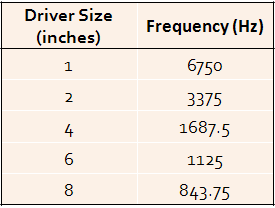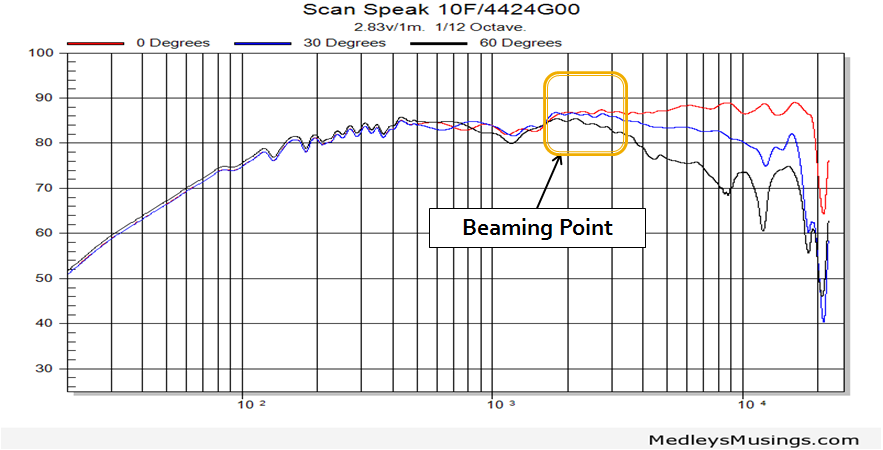Beaming is kin to the acoustic low-pass (discussed in the following post).
Beaming is a function of the effective driver size: the dispersion narrows as the wavelength (frequency) becomes smaller than the size of the drive unit.
Note: Effective driver size is taken from 1/2 surround to 1/2 surround.
All drivers beam! Though, some drivers are built to extend further on a given axis than others, but often at a cost (sensitivity, cone breakup, etc).
Frequency response measurements illustrate beaming easily; look for the on and off-axis responses to diverge. This is your beaming point.
The formula to approximate the beaming point is: 0.5*(Speed of Sound)/(Driver Size).
Note: This is for the case of a conical driver. The same formula applies for square/rectangular/oval shaped drivers. In this case you simply use the dimension to determine the vertical or horizontal beaming point. For instance, a 5x7" driver doesn't have a uniform polar pattern; it will beam at the 5" and 7" dimension so therefore you will have a different response on/off axis vertically and horizontally (depending on how the driver is oriented to the measurement device).
Below is a table illustrating approximate beaming points for a round driver with a given cone diameter:
In the example below of a 4” midrange with an effective diameter of about 3”, beaming occurs approximately at 2khz.


No comments:
Post a Comment